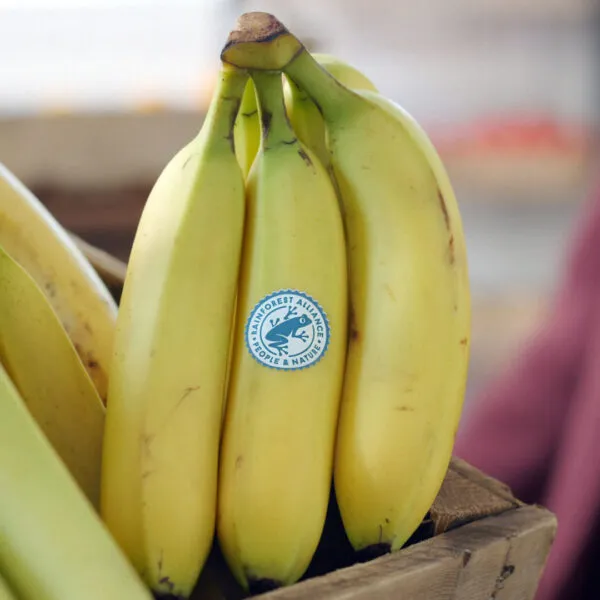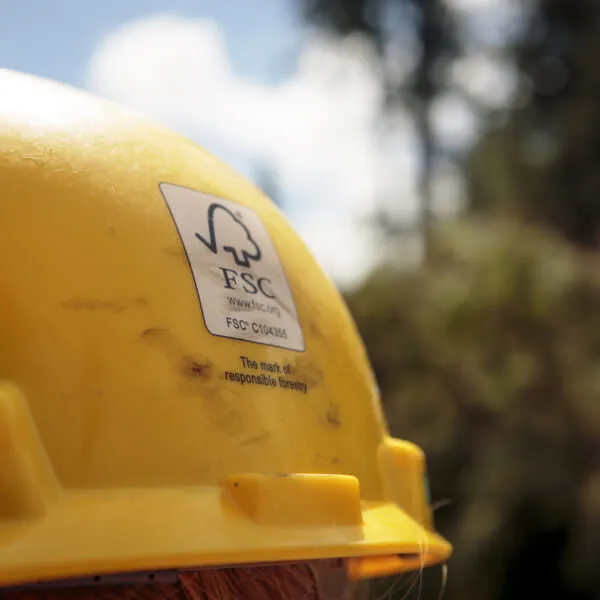We are committed to keeping our Sustainable Agriculture Standard effective and relevant. In line with the ISEAL requirements for standard setting, the following procedure is used for standard setting. We review our Standard at least every five years. During this review, we gather latest scientific information and best practices, solicit input from stakeholders, and take into account audits and other evaluations. Whenever the Sustainable Agricultural Standards are revised or updated, we republish them on the Rainforest Alliance website and ensure all stakeholders have the information and training they need.
Developing a new Sustainable Agriculture Standard
The process of standards review begins with setting up a team to conduct a demand assessment, which includes:
- A review of the overall goal of the new standard.
- An analysis of who needs and will use the standard.
- A description of how the demand can be met.
- A problem and risk analysis (including financial risks).
- An assessment of the extent to which current standards already fully or partially meet the desired goal.
The Rainforest Alliance management team then reviews the assessment report. If it shows a need and there is a practical way in which a new standard can meet the identified need(s), the management team sends it for approval to the Rainforest Alliance Board of Directors.
If the Board approves, the Rainforest Alliance assigns a standards team to develop, prepare, and implement the new standard. This process has three key steps:
Drafting a new Standard
The Rainforest Alliance is committed to providing all stakeholders with appropriate and balanced opportunities to contribute to the development of any new Rainforest Alliance Agricultural Standard.
Our standards team will develop an initial version of the new standard (Standard Version 0.1) based on the latest technical expertise, stakeholder input, community considerations, and other research. If this version is approved internally, we will publish it on the Rainforest Alliance website for 60 days of public consultation. This consultation is widely announced via Rainforest Alliance email newsletters and various other internal and external channels. We are careful to actively solicit input from hard-to-reach stakeholders.
Based on the comments received, additional technical input, and any additional research, the standards team prepares a Standard Version 0.2. This second version follows the same process as the first, with a publication and feedback period last for 30 days from date of publication. The standards team also publishes a website summary of the feedback, concerns, and main changes.
Based on the public comments, additional technical expertise if needed, and any needed additional research, the standards team prepares a Standard Version 0.3. If there are still concerns, or more feedback needed, the standards committee may request an additional round of public consultation.
If there is no additional feedback or concerns, the new standard is submitted for approval to the Board. Upon approval by the Board, the standards team publishes the new standard along with a summary of the comments received during all rounds of public consultation and the main changes.
Planning for a new Sustainable Agricultural Standard
Once the new Standard is approved, the standard team prepares both a Time Plan and Terms of Reference for its implementation. For the Time Plan, the standards team collects information about sustainability and production issues from:
- Non-governmental organizations working in the relevant sector;
- Relevant stakeholders
- Academic and technical literature;
- Relevant websites of industry bodies, roundtables, and public-private-partnerships;
- Media coverage; and
- Other relevant sources of information.
The Standards Team also prepares an update of the Terms of Reference for the new standard. The Terms of Reference include the following elements:
- The proposed scope of the new standard;
- A justification of the need for the revision of the standard, including:
- An assessment of the most important sustainability issues falling within the scope of the standard;
- An explanation of whether the proposed standard will meet an expressed need;
- Documentation of other standards operating, or in development, that meet all or part of the expressed need;
- Clear social, environmental and economic outcomes that the standard seeks to achieve; and
- An assessment of risks in implementing the standard and how they will be addressed.
Upon approval, the Terms of Reference and the Time Plan are published on the Rainforest Alliance website.
Implementation and publication of a new Standard
Once the Rainforest Alliance Board of Directors has approved the Terms of Reference and Time Plan, the standard is ready to be implemented. All relevant stakeholders are informed and trained in the new standard. All approved standards will be published on the Rainforest Alliance website.
Drafts and final standards will always be available in English, the official language of the Rainforest Alliance. We will seek to ensure that translations of the new standard are available in additional languages commonly used by stakeholders using the Sustainable Agricultural Standard.
The Rainforest Alliance will keep on file for at least five years all the records related to each standards development. These will be available to stakeholders upon request.
Non-substantial revisions of the Standard
In case of a need for a non-substantive change to the standard, for example to clarify existing language, there is no need for a formal revision process. However, there will be a notification of the change(s) in the subsequent review and revision process.
Urgent revisions of the Standard
In case of a need for an urgent substantive change to the Sustainable Agricultural Standard, the Rainforest Alliance will determine the appropriate procedure to adopt such a change. The procedure for such an urgent revision consists of a selection of the above-described steps of the revision procedure. As a minimum this will include approval by the standards committee, publication on the Rainforest Alliance website of the proposed change, including the reasoning and the urgency, and identification and notification of directly affected key stakeholders.
Implementation and consolidation of the 2020 Standard system
In 2022 the Rainforest Alliance is focusing on supporting the implementation of our new Standard by further developing and consolidating the systems for contextualization, learning, and continuous improvement as well as the assurance system, impact measurement, and the development of the IT certification platform.
The Rainforest Alliance promotes continuous improvement within certified farms and is doing the same within our own standard systems and organization. Questions and feedback are collected and analyzed to improve our training and support to certificate holders. We also work to develop contextualized policies and interpretation guidance, further research, and amendments for inclusion in future versions of the Standard. A learning framework has been set up to promote and facilitate learning from feedback and our own experience, and to further improve our systems over time.
For 2022, key workflows include Learning and content development, Systems development, Benchmarking and Representation and working on the user friendliness of our system.
Learning and content development includes continuing our work with our valued group of Early implementers, a group of certificate holders we work with to test and learn new content and approaches. In 2022, this group is being broadened to have a better coverage of crops and regions and function as a sounding board to receive feedback on our systems.
In 2021 we received feedback that led us to a process of smaller standard updates on a yearly basis. Based on this, we published updates in standard documents at the end of January 2022. These updates are mainly smaller clarifications and corrections to facilitate understanding and implementation of the system. The feedback also included a number of issues where we will set up a more thorough review to further explore and develop solutions, over a longer period of time. These include working on improved classifications of small and large farms, assessing optimization of the requirements for internal inspections for small farms and further guidance on working with service providers.
We will also conduct several benchmarking studies of our 2020 Standard against other standards, to support certificate holders and market partners accurately assess the differences and make informed choices.
To make our standard content easier to access, we are reviewing several documents and tools and make processes easier. To this end, also the landing page for our certification program, which on our website was updated in February 2022.
Joint efforts
In the 2020 Standard, the Rainforest Alliance works in partnership with the specialised certification program of the Union of Ethical Biotrade (UEBT) for the joint certification of herbs and spices and other specialty ingredients. Farm certification of these ingredients is managed through UEBT with an agreed supplement for producers who also want Rainforest Alliance Certification. Supply chain certification is covered by the Supply Chain Requirements of the 2020 Rainforest Alliance Standard and captured in the Rainforest Alliance Certification platform.



